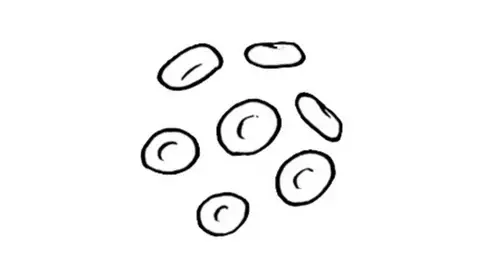Consolidation of venetoclax is well tolerated in patients with previously untreated CLL
Consolidation of venetoclax after 12 treatment cycles increases the duration of known toxicities and does not prevent loss of minimal residual disease response and subsequent risk of disease relapse in patients with untreated chronic lymphocytic leukemia before, according to a study.
Consolidation of venetoclax (Venclexta) after 12 treatment cycles increases the duration of known toxicities and does not prevent loss of minimal residual disease (MRD) response and subsequent risk of disease relapse in patients with previously untreated chronic lymphocytic leukemia (CLL).
Data are from the primary analysis of a Phase 2 trial (HOVON 139/GiVe, NTR6043) that examined the activity and safety of 12 consolidation cycles of venetoclax after a patient was unfit for of fludarabine received fixed-duration venetoclax plus obinutuzumab (Gazyvaro). The study also aimed to see if this could be guided by MRD status.
Enrollment was open to patients 18 years of age or older with previously untreated CLL who had an ECOG performance status of 0-2 and were unsuitable for fludarabine-based therapy.
The open-label, multicenter, randomized trial enrolled a total of 70 patients who received two volume reduction cycles of intravenously administered obinutuzumab (100 mg on day 1, 900 mg on day 2, and 1000 mg on days 8, 15 and cycle day 1 2), which was then followed by fixed-duration venetoclax plus obinutuzumab for a total of 12 cycles. These were 6 cycles of obinutuzumab given intravenously at 1000 mg on days 1 and 12 during 28-day cycles of oral venetoclax, starting with a 5-week ramp followed by 400 mg given once per day until the end of cycle 12.
Then, patients were randomized 1:1 based on peripheral blood MRD status and received either 12 cycles of venetoclax consolidation regardless of MRD, or venetoclax consolidation if MRD was detected at all. randomization.
The primary endpoints of the study were undetectable MRM in the bone marrow and absence of disease progression 3 months after completion of intent-to-treat consolidation therapy with safety assessed in all patients who received at least 1 dose of any drug used in the study. Analysis of the primary endpoint of this trial is currently ongoing and registered with EudraCT (2015-004985-27).
Of the 70 patients enrolled, a total of 67 (47 males and 20 females) received fixed-duration therapy with 62 of these participants randomly assigned to receive 12 cycles of venetoclax consolidation (n=32) or venetoclax consolidation guided by MRD (n = 30). One participant assigned to MRD-guided consolidation was MRD positive at the time of randomization.
At a median follow-up of 35.2 months (range: 31.5 to 41.3 months), 16 of the 32 patients in the consolidation group (50% [95% CI 32–68]) and 16 of the 30 in the MRD-led consolidation group (53% [34–72]) met the primary endpoint of undetectable MRD in the bone marrow as well as the absence of progressive disease.
Of the 32 patients in the venetoclax consolidation group, 22 (69%) reported grade 2 to 4 adverse events (AEs), compared with 11 (37%) of the 30 patients in the MRD-guided consolidation group. Infections were primarily the AEs observed in these patients with the most common grade 3 or worse AEs consisting of infection 6% in the consolidation group (n = 2) and 3% in the MRD-guided consolidation group (n = 1). Additionally, neutropenia was reported in 6% (n=2) in the consolidation group and 7% (n=2) in the MRD-guided consolidation group. No treatment-related deaths were reported during the trial.
The results demonstrated that both maintenance treatments, fixed-duration venetoclax and MRD-guided venetoclax, were well tolerated and demonstrated high efficacy after the given cycles. MRD-guided venetoclax maintenance therapy also demonstrated low rates of adverse events compared to fixed-duration venetoclax. Further research is needed to investigate the effectiveness of MRD-guided, fixed-duration venetoclax maintenance therapy following induction of venetoclax plus obinutuzumab.
THE REFERENCES:
Kersting S, Dubois J, Nasserinejad K, et al. Consolidation of venetoclax after fixed-term venetoclax plus obinutuzumab for previously untreated chronic lymphocytic leukemia (HOVON 139/GiVe): primary endpoint analysis of a multicenter, open-label, randomized, parallel-group phase 2 trial. Hematol Lancet. 2022;9(3):e190-e199. doi:10.1016/S2352-3026(22)00034-5


Comments are closed.